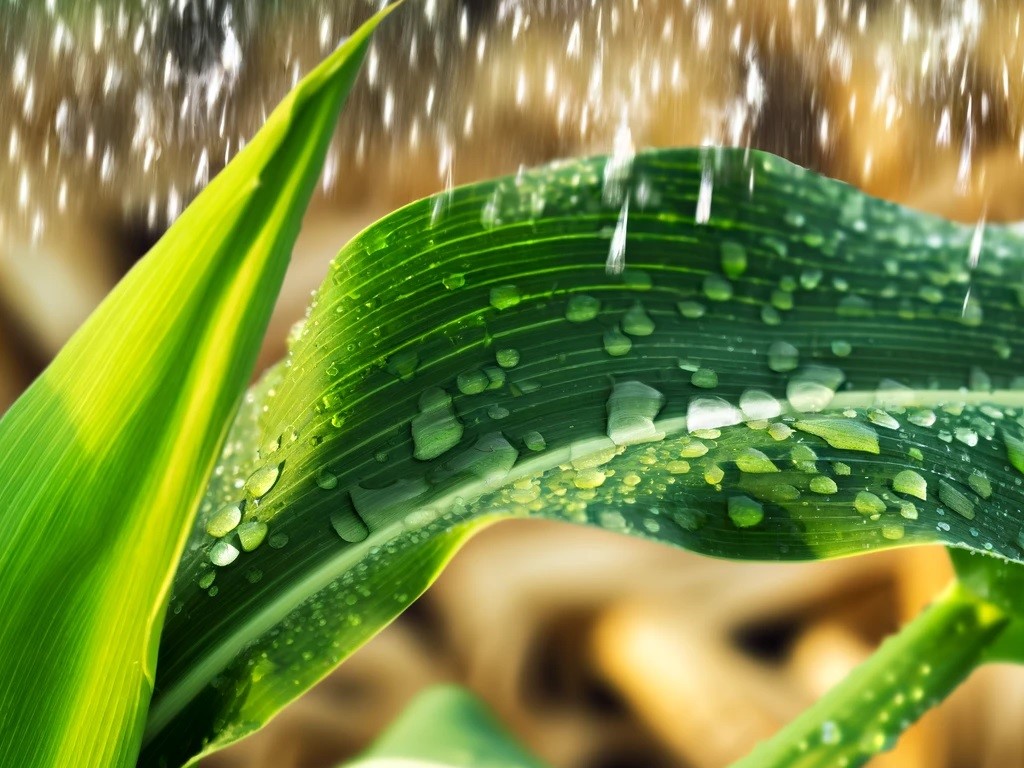
A novel insecticidal protein is designed to protect crops from pests. The special feature: Thanks to special anchor proteins, the active ingredient adheres better to the leaves and is not washed off so easily by rain.
Today, chemical insecticides in particular still protect our crops from pests. But all too often they end up in the soil, groundwater and ultimately in our food chain. It is therefore important that insecticidal molecules have no negative effect on humans or the environment. Active substances that are completely biodegradable after a short time are also ideal. There are currently 281 pesticides registered in Germany. However, only very few fulfill these two conditions. There is therefore an urgent need for new active substances to make our agriculture more sustainable.
The project partners and the overarching goal
Scientific partners
- Prof. Dr. Ulrich Schwaneberg (project coordinator), Chair of Biotechnology, RWTH Aachen & DWI-Leibniz Institute
- Dr. Boonhiang Promdonkoy, National Center for Genetic Engineering and Biotechnology (BIOTEC), Thailand
One such active ingredient is Vip3A. It is a natural protein that comes from the bacterium Bacillus thuringensis and effectively kills leaf-eating butterfly larvae. However, the substance is considered harmless to humans and other animals. However, there are two problems: Vip3A is not particularly heat-stable and loses its biological function at higher temperatures of around 50°C. Furthermore, “rain-resistant binding of protein toxins to plant leaves is a general problem due to the lack of leaf-binding domains,” explains Professor Ulrich Schwaneberg.
This is now set to change thanks to the InFuProts project. The scientists at RWTH Aachen University and the DWI are using protein engineering to adapt the structure of the active ingredient accordingly. In other words, they modify the gene sequence to give the protein the desired properties. Their partners are experts from Thailand. Chinese broccoli (Brassica alboglabra) in particular is an important vegetable crop there, which will be used as an example to test the new active ingredient. The Thai team is also responsible for producing the active ingredient.
The procedure
In order to improve the adhesion of peptide proteins to leaves, Dr. Florian Bourdeaux and Prof. Ulrich Schwaneberg’s team generated a fusion protein from the Vip3A toxin and an adhesion promoter peptide called AP24. The Vip3A adhesion promoter peptide is non-toxic and attaches the Vip3A protein to the wax layer of leaves. The adhesion is very strong due to the 3D structure and multitude of interactions, so that the AP24-Vip3A fusion proteins adhere to the leaf surface and remain active even after a heavy downpour.
As a next step, the working group in Aachen has increased the temperature resistance of the Vip3A protein. Using computer-assisted methods, they identified the domain of the protein that was the least temperature-stable and molecular dynamics simulations were used to select the amino acid positions in order to minimize fluctuations and thus increase temperature resistance. In Thailand, the researchers then tested which of the modified proteins had the best effect against insects. “Our new Vip3A is four to five degrees more stable and just as effective,” say Prof. Schwaneberg and Dr. Bourdeaux proudly. The Ap24-Vip3A fusion protein can simply be sprayed onto the leaves as a solution. In Thailand, Vip3A is already a product that is being sold.
Outlook
However, the basic technology behind it could find its way into fields all over the world. In the meantime, Schwaneberg has founded a company-building firm, Aachen Proteineers, which markets the so-called adhesion promoter technology platform. Active ingredient containers decorated with adhesion promoter peptides are used in a product line. The containers consist of sugar polymers that adhere equally well to the leaves via the adhesion promoter peptides and can be filled with almost any content/active ingredient. For example, with a copper salt, which plays a major role as a plant protection agent in viticulture. As the pesticide is fixed to the leaf surface for a longer period of time, less of it is needed: “We were able to show that the containers reduced copper application in the field by a factor of 3, and in the greenhouse by a factor of 40,” says Schwaneberg.
Source
RWTH Aachen, press release, 2024-03-12.
Supplier
DWI Leibniz-Institut für Interaktive Materialien
National Center for Genetic Engineering and Biotechnology (BIOTEC)
RWTH Aachen
Share
Renewable Carbon News – Daily Newsletter
Subscribe to our daily email newsletter – the world's leading newsletter on renewable materials and chemicals









